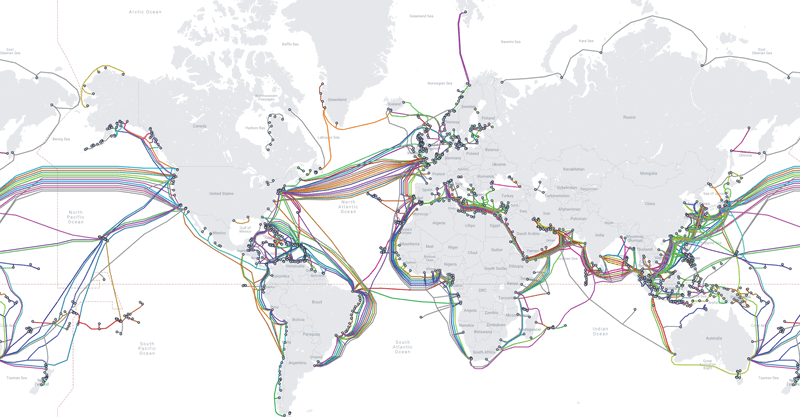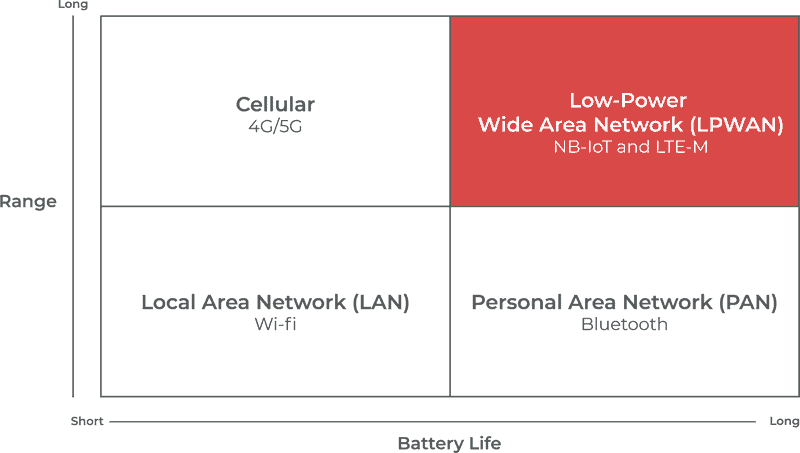The introduction of digital devices into just about everything we do is pervasive; smart vehicles, smart watches, smart homes, through to smart cities; IoT is already fundamentally reshaping our daily lives.
The foundational infrastructure that allows the communication between devices and the collection of this data for processing and interpretation underpinning this IoT-enabled existence, is the telecommunications industry. The physical infrastructure like submarine communications cables crisscrossing the planet, fibre optic backplanes, through to the local 5G towers that facilitate direct internet connections for many IoT devices are the very nervous system for IoT rollout across the global.

Global Map of Submarine Cables, courtesy of submarinecablemap.com
How is the Demand for IoT affecting the Telecommunications Industry?
The primary growth area for telecommunications organisations (telcos) is IoT. There is an insatiable demand for bandwidth enabling the connectivity of each smart device as they grow in sophistication. Along with the sheer increase in the number of endpoints, it’s causing a seismic shift in the industry. Amplifying this further, there is increasing demand for speed and bandwidth by the ancillary data science, and the management & automation layers that interact with IoT rich networks. While personal smart devices are accounting for nearly a third of all monitoring traffic, it’s data from the corporate IoT deployments that is generating more sensitive, and typically more critical traffic.
The vital importance and growing reliance on IoT means downtime has a much more pronounced impact on organisational operations, as well as society at large. This means that outages are even less tolerable than in previous times where a phone outage, while an inconvenience, was unlikely to have catastrophic consequences. Contrast that with IoT medical devices, critical infrastructure, primary industry, or Industrial IoT where an outage can literally be fatal, and we can see that additional stringent requirements must be met. This challenge is incredibly difficult to address, as the historical asset management and security solutions are simply not adequate or adaptable enough to safely facilitate the adoption of IoT en masse. CyAmast, for instance, uses a new methodology to address these challenges that doesn’t rely on trying to retrofit old signature-based security solutions that aren’t fit for purpose.
CAASM inside Telecommunications Organisations
On the inverse side, IoT is being adopted by telcos to improve their own operations too. Telcos are already utilising IoT to develop new solutions for their business customers as well as consumers. Being able to marry together the data from even more endpoints to enrich already detailed profiles offers tangible benefits (and possible pitfalls) to consumers – both private and corporate. Big Data, in conjunction with IoT, provides an advantage over firms when developing custom solutions from the more numerous datapoints generated within reach of telcos. This additional data can help with the optimisation of everything from a factory production process, a personalised healthcare system, or retail shop management services, to myriad other industry and company-specific solutions. Thus, IoT may assist consumers in receiving a solution to their specific problem while also allowing telecom companies to build more lucrative relationships with their customers. Furthermore, IoT is already being utilised to design network architecture solutions that offer the best connectivity solution, thus enhancing the processes already in place. Ericsson, for example, is well-known for combining IoT and AI to accomplish this type of network design optimisation.
Telecom companies have significant capital expenditure as part of their operations. As well as their central transmission hubs, exchanges, and their own data centres, they also have equipment, like picocells, placed in remote areas. These require facilities like air conditioners and backup generators, both of which must work correctly to prevent any downtime. Companies can keep an eye on distant towers and anticipate problems by installing and monitoring sensors, and with a solution like CyAmast, ensure that not only is the isolated equipment secure, but that its predictive maintenance capabilities help to ensure uninterrupted operations.
While traditional terrestrial mobile infrastructure bears the majority of the weight for IoT, IoT devices can also connect via satellite to essentially remove the possibility of interruption due to signal loss. Pair this with LPWAN (Low Power Wide Area Networks) like NB-IoT and LTE-M (NarrowBand IoT and LTE-Machine Type Communication), and we’re seeing substantially new paradigms within the telco sector that are fundamentally changing how devices are connecting to each other. Reduced power usage means that devices need less maintenance; and we’re talking anywhere up to 10 years of battery life, so deployments of LPWAN enabled IoT solutions can be considered with ostensibly no expected maintenance requirements relative to historic deployments. They also require far less CAPEX to achieve similar outcomes compared to traditional infrastructure solutions as much of the server and network gateway requirements are no longer needed.

Image Concept courtesy of KotahiNet
As we see these new deployments rolled out, telco-powered Software as a Service and Platform as a Service (SaaS and PaaS respectively) options are being offered in parallel. With open, modular architecture allowing for robust APIs between the modules, telcos are in a unique position to offer their corporate customers an ecosystem that not only supports their own IoT plans, but helps centralise control and application use, even when deployments occur over unconventionally long distances.
Conclusion
Telcos are able to offer their customers a richer experience and better outcomes than just the provision of communications capabilities. They are building full end-to-end solutions through to organisational-specific data analytics and data science services that help wrangle and extract value from the data generated by IoT devices and business data. Telcos are the conduit between the tsunami of IoT devices being deployed and the integration with enterprise software to deliver greater outcomes.
IoT has transformed the way individuals and companies interact in today’s society. In the next five years, it’s predicted that telcos will add $1.8 trillion to their collective revenue through IoT related services. The pace at which communication has improved throughout the spectrum seemed unimaginable even a decade ago. Paired with the CyAmast solution to maintain visibility and security over these massive initiatives, the improved capabilities can be fully realised.





